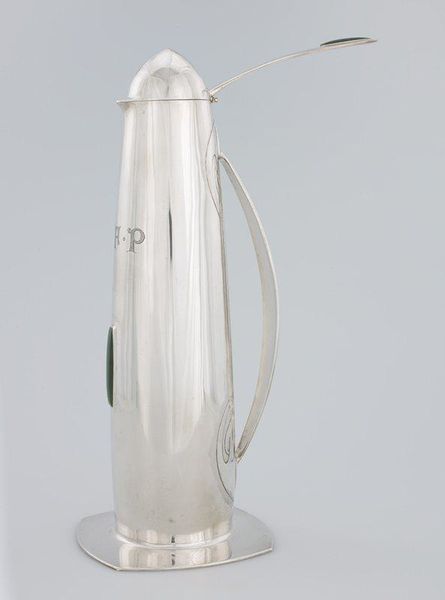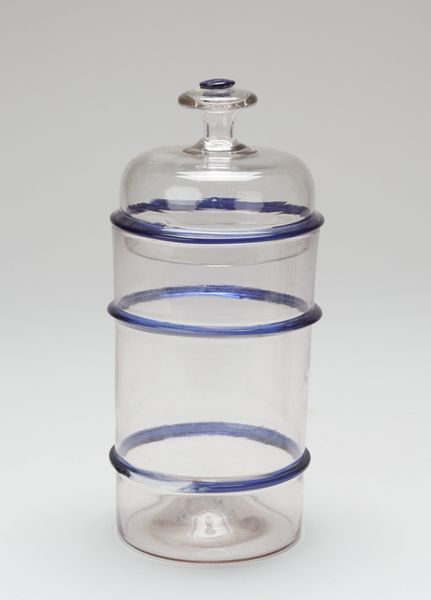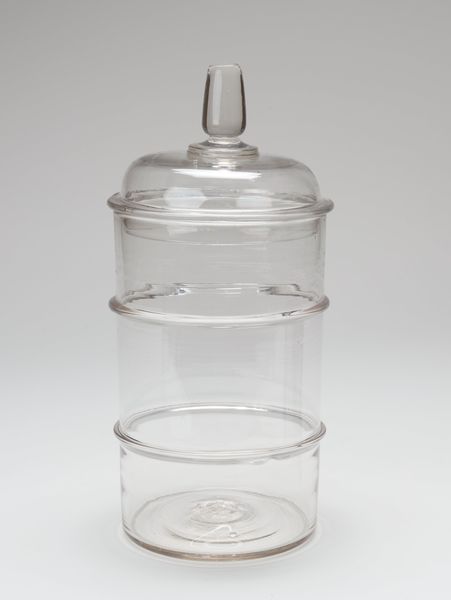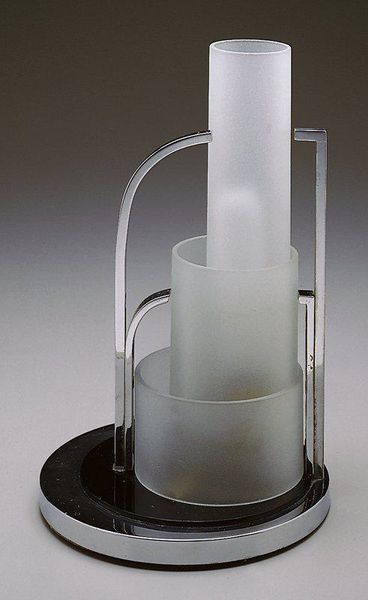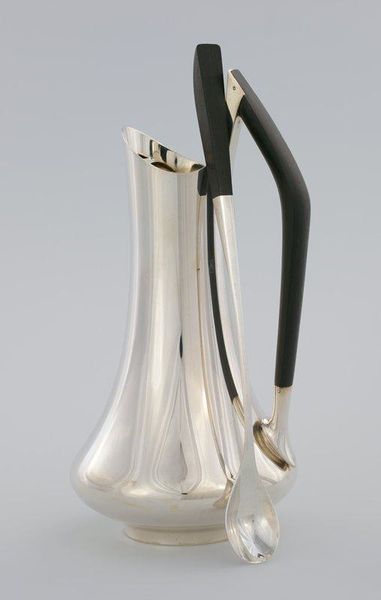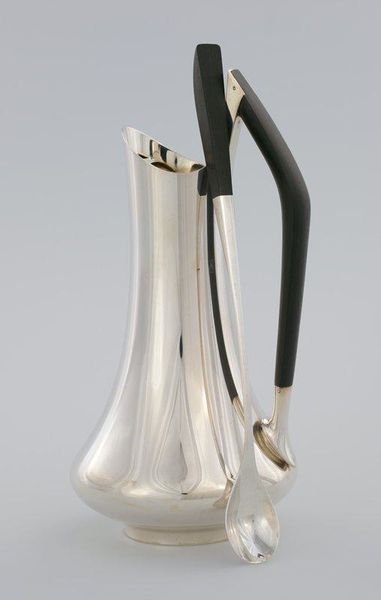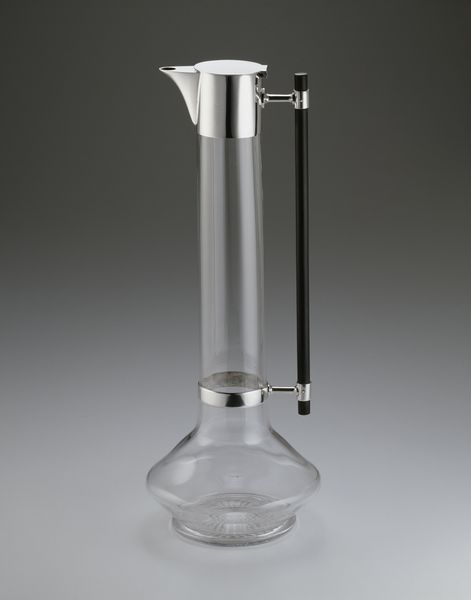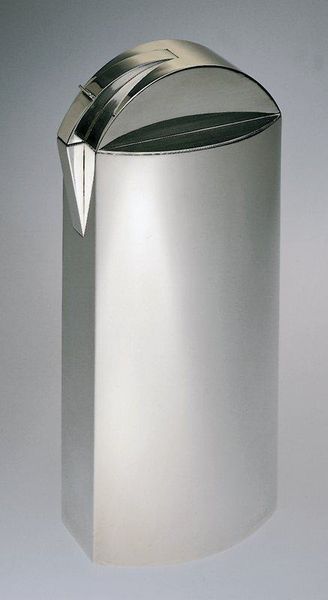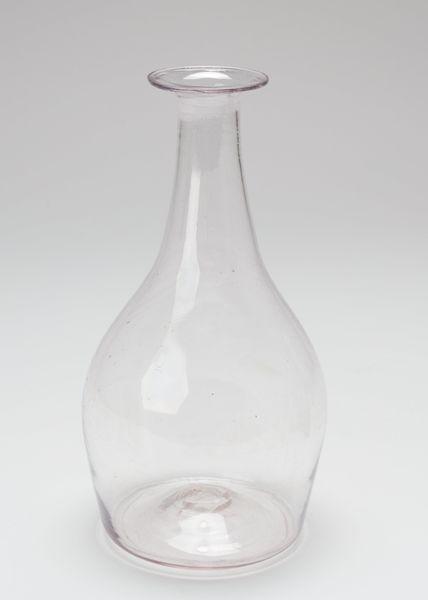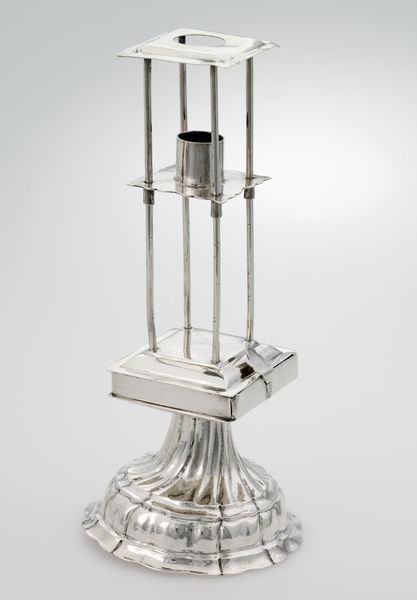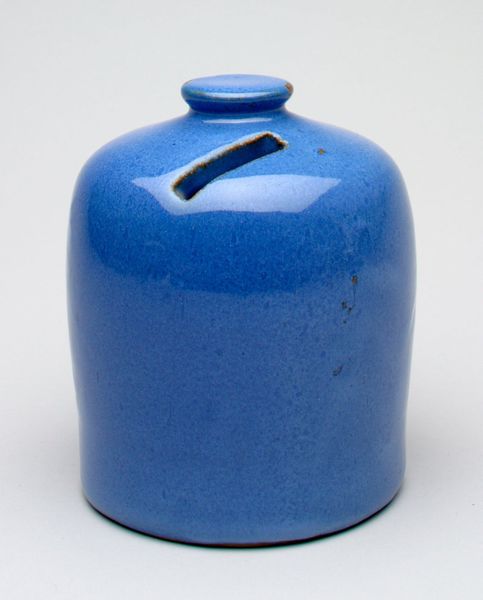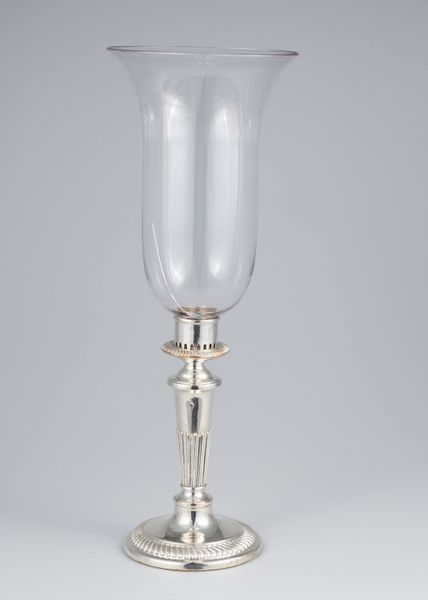
Dimensions: 14 1/2 x 5 x 8 1/2in. (36.8 x 12.7 x 21.6cm)
Copyright: No Known Copyright
Editor: This is the "Model Electric Liquefier" made around 1950 by the Hollywood Liquefier Corporation. It’s a photograph, and it's surprisingly compelling for a kitchen appliance! The composition, with its clean lines and contrasting blue and white colors, gives it an almost futuristic feel. What elements stand out to you most? Art Historian: What strikes me is the object's rigorous geometry, which yields a fascinating interplay of form and function. Note how the vertical striations on the glass jar contrast with the smooth, curved base. Consider also the strategic placement of the speed controls, interrupting but ultimately contributing to the overall design. Editor: I hadn't really noticed how the texture of the glass plays against the curves, that is an interesting juxtaposition. The placement of those controls too. But why emphasize design so much for something so…practical? Art Historian: Functionality here does not preclude aesthetic intention; rather, they appear mutually constitutive. The choice of color, the deliberate contours, and the photographic medium itself, all suggest an ambition extending beyond mere utility. Do you observe a conscious articulation of form for its own sake? Editor: I guess I do now that you mention it. The colors aren't just random, the streamlining suggests an object conceived to be appealing, not just useful. So you are seeing that intention of the design, itself, is the artwork here? Art Historian: Precisely. And it is within these deliberate choices where the work achieves its significance, independent of its practical function. The careful photographic presentation amplifies this effect, further removing the object from simple utility. I wonder how the angle, light and composition draw us back to looking at its parts in particular ways? Editor: That makes me think differently about design. It's more than just making something work; it's about making it…seen. Thank you. Art Historian: Indeed. Analyzing objects based on their form brings into sharp focus all the various considerations involved in producing a product that's useful, yes, but also has appeal, interest, beauty.
Comments
minneapolisinstituteofart about 2 years ago
⋮
The Hollywood Liquefier, with its dynamic triangular, two-tone base, was the next generation of electric blender. The Waring Mixer Corporation introduced the blender in 1937, and it shortly became a must-have item in American kitchens. It made meal preparation easier and faster by mixing, pureeing, and chopping at the touch of a button. By the 1950s, however, unadulterated function gave into styling and color, both playing a greater role in the modern kitchen.
Join the conversation
Join millions of artists and users on Artera today and experience the ultimate creative platform.
